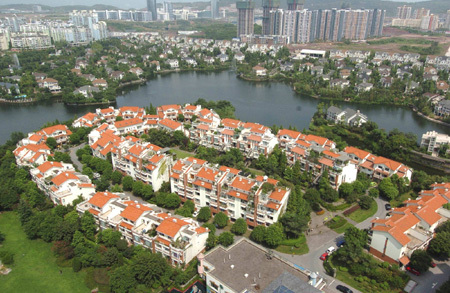V-2 Question: In the years from 1978 to 2005, China's annual growth rate averaged a miraculous 9.6 percent. What are the driving forces for the growth? Can anyone predict how long such agrowth rate will last?
A: In the past two decades, China has maintained an average annual growth rate of 9.6 percent. China entered a new round of growth after 2003. The GDP growth rate for 2003, 2004, 2005 and 2006 was 10 percent, 10.1 percent, 10.4 percent and 10.7 percent respectively. This is a miracle in the economic history of China.
Several factors have fueled rapid economic growth. First, growth is pulled by increase in investment, which has contributed to 70 percent of the growth. Secondly, economic growth is pushed by private consumption. Industrialization and urbanization have increased private consumption and hence output. Thirdly, rapid economic growth also rests on an ample supply of labor and capital as well as a sound market economic system and an effective macroeconomic policy. Despite its aging population, the dependency ratio in China is still relatively low.
Overall, China's current economic growth rate is normal. One major problem, however, is the high cost. If we do not change the model of economic growth, optimize economic structure, and conserve resources, China's economic growth will neither be stable nor fast. Of course, it is not an easy thing to maintain a high growth speed after two decades' of rapid growth. After evaluating the domestic and international situations, some economists predict that before 2025, China will maintain a growth rate of 8-10 percent.
A growth rate of 8 percent is not low, which is much higher than the average growth rate of the world. As time goes by, the projected growth rate can be readjusted to the economic situation. A stable growth rate at 8-10 percent is realistic in light of China's expanding market demands, rich and better labor resources, deepening economic reforms and a stable social and political situation.

(China.org.cn)